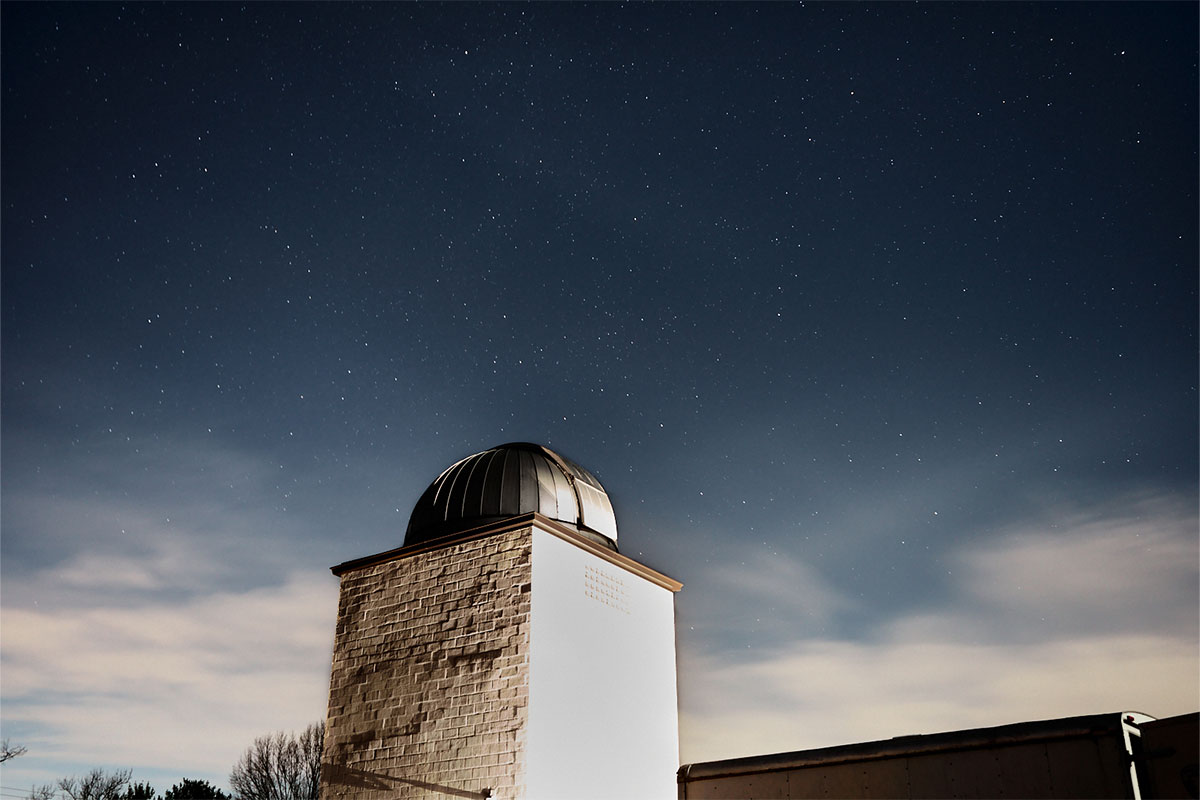The sky around Turner Farm Park Observatory in Great Falls — one of the best places for stargazing in the county — will get a little darker, thanks to new regulations that limit light pollution. As a result, stargazers and astronomers at the observatory will be able to get a better glimpse into the stars and planets above.
Light pollution is the phenomenon when bright light filters into the atmosphere, brightening the night sky and limiting humans’ ability to view the stars.
The Fairfax County Board of Supervisors approved in November a set of regulations that will limit the amount of light pollution within a half-mile radius of Turner Farm Park Observatory, thereby keeping the skies clearer for observation.
“Light pollution definitely impacts the way we see the sky,” says Sebastian Arnez, an educator at Turner Farm Observatory. “Northern Virginia is one of the more light-polluted areas in the country.”
While Great Falls is one of the darker areas in the region, light can encroach from nearby areas like Tysons Corner, he says.
Stargazing Site
The Turner Farm is a park at the site of a former dairy farm, consisting of playgrounds, picnic tables, equestrian facilities, and an observatory. The observatory contains both an orientation room, where educational programs are held, and an observation room that holds three telescopes.
The Fairfax County Park Authority, in collaboration with volunteers from the Analemma Society, offers a host of stargazing and astronomical observation programs, many of which are free and open to the public.
A popular, recurring event at Turner Farm is the Friday night viewing. Every Friday night from 7:30 to 9:30 p.m. (weather permitting), there is a guided viewing session, where visitors can see planets and constellations using the observatory’s telescopes or their own.
The park hosts other special events, including a viewing of the Geminid meteor shower on December 13; astronomy festivals on December 15, January 20, and February 17; and night sky tours on January 3 and February 26.
“In the Fairfax area, we’re probably one of the only ones where you can do stargazing like that,” Arnez says, noting that Sky Meadows State Park in Delaplane is another nearby site for stargazing.
Most events require registration online. When an event is not going on, the park is open from dawn to dusk.
The New Rules
The new zoning ordinance amendment places limits on which lights must be cut off (meaning that the bulb is not exposed), which keeps light contained to its intended area. The rules apply to all buildings within a half-mile radius of the observatory.
The amendment states that Fairfax County is an area that experiences a lot of overall light pollution, but lighting closest to the observatory has the most impact.
“One light bulb located one-half mile from the observatory would have approximately the same impact as four bulbs located one mile away or almost 200 bulbs at Tysons, about seven miles away,” the staff report says.
The changes do not contain limits on the number of lights per lot or the lumens for cut-off lights, based on advice from Fairfax County Police that “proper lighting can be a deterrent for criminal activity, but over-lighting is not needed to facilitate a safe environment.”
The amendment states that:
- Lights on single family lots must be cut off if they are over 20 lumens, with exceptions for lights on exterior doors and garages, up to 1,500 lumens.
- Motion-activated lights must be cut off if they are 1,500 lumens or less, a reduction from the previous 4,000 lumens.
- Uplights and spotlights will be limited to 300 lumens per fixture.
Existing lights that do not abide by these regulations can remain until they are replaced.
“As light pollution goes down, we can hopefully see more stars in general,” Arnez says. “I expect this ordinance to definitely help us out with our stargazing opportunities. Smaller objects like meteors sometimes get drowned out by the light pollution from the residential areas.”
Feature image courtesy Fairfax County Park Authority
For more stories like this, subscribe to Northern Virginia Magazine’s Parks and Recreation newsletter.





